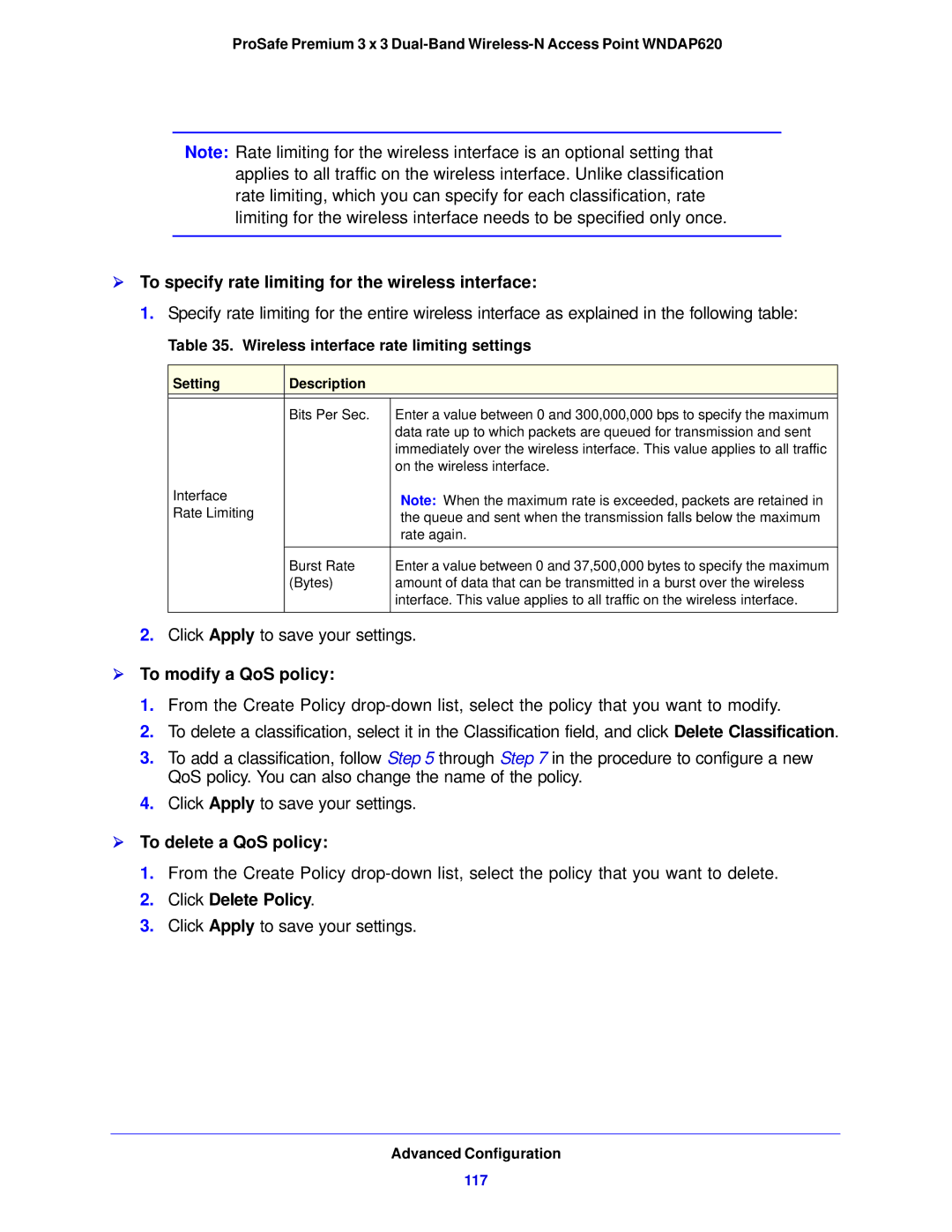
ProSafe Premium 3 x 3
Note: Rate limiting for the wireless interface is an optional setting that applies to all traffic on the wireless interface. Unlike classification rate limiting, which you can specify for each classification, rate limiting for the wireless interface needs to be specified only once.
To specify rate limiting for the wireless interface:
1.Specify rate limiting for the entire wireless interface as explained in the following table:
Table 35. Wireless interface rate limiting settings
Setting | Description |
|
|
|
|
| Bits Per Sec. | Enter a value between 0 and 300,000,000 bps to specify the maximum |
|
| data rate up to which packets are queued for transmission and sent |
|
| immediately over the wireless interface. This value applies to all traffic |
|
| on the wireless interface. |
Interface |
| Note: When the maximum rate is exceeded, packets are retained in |
Rate Limiting |
| |
| the queue and sent when the transmission falls below the maximum | |
|
| rate again. |
| Burst Rate | Enter a value between 0 and 37,500,000 bytes to specify the maximum |
| (Bytes) | amount of data that can be transmitted in a burst over the wireless |
|
| interface. This value applies to all traffic on the wireless interface. |
2.Click Apply to save your settings.
To modify a QoS policy:
1.From the Create Policy
2.To delete a classification, select it in the Classification field, and click Delete Classification.
3.To add a classification, follow Step 5 through Step 7 in the procedure to configure a new QoS policy. You can also change the name of the policy.
4.Click Apply to save your settings.
To delete a QoS policy:
1.From the Create Policy
2.Click Delete Policy.
3.Click Apply to save your settings.
